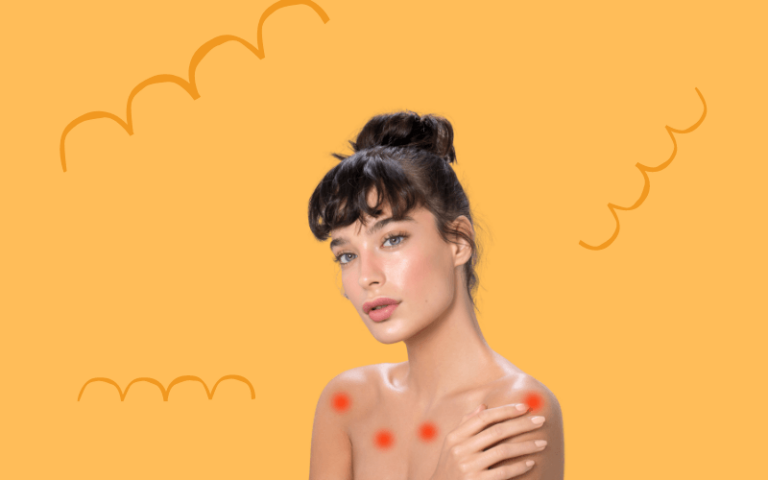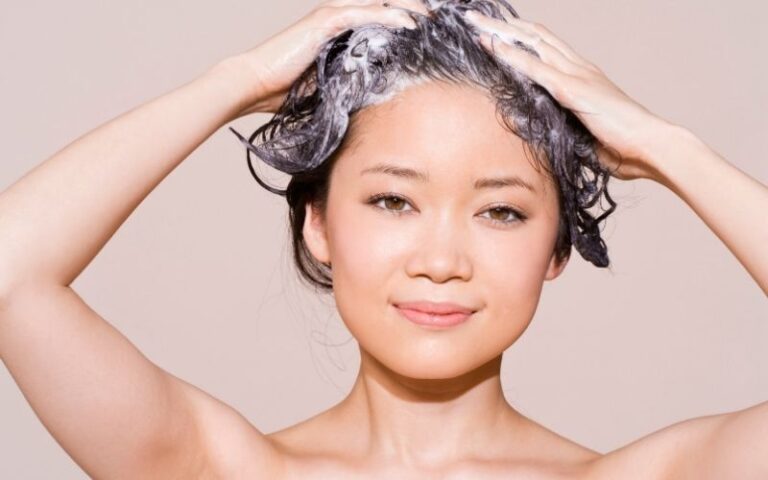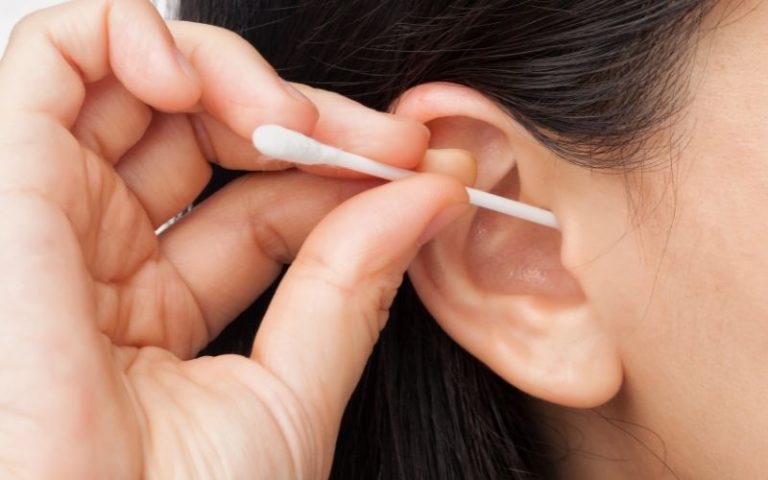The #1 Way To Use Tea Tree Oil For Acne, Dermatologist Explains

Okay, but is there anything tea tree oil can’t do???
This versatile oil seems to be a jack of all trades and a real superstar when it comes to one thing — making you look amazing.
Tea tree oil has rescued so many people from their worst skincare nightmares, and it just might do the same for you.
Among all the different skin conditions that tea tree oil can conquer, can it win the war on acne? Yes, yes, and yes.
We’re gonna tell you exactly why it can and how you can use it to your advantage.
So let’s get right into this lil’ tea tree adventure.
How should I use tea tree oil?
Time to get into the good stuff:
Before using any new products, you should always try a test spot first in a hidden area to see if your skin will tolerate it.
This is also called a patch test.
People with dry skin, sensitive skin or who have certain skin conditions, like eczema or psoriasis, may be unable to tolerate TTO.
Some people may also have an allergic reaction to it and develop a contact dermatitis rash.
TTO that has expired or was not stored properly (we talk about this later) is more likely to cause a reaction.
TTO combinations
You can mix the pure oil, TTO, with a carrier oil to dilute it. This is best for people that are sensitive to TTO.
Carrier oils, like coconut oil, almond oil, jojoba oil, argan oil, avocado oil, or olive oil, are oils that have little or no scent and are used to dilute the strong essential oils, like TTO.
A small amount of this combination can then be applied as a spot treatment with a cotton ball to the pimple 1-2 times a day.
If you are using aloe vera gel, you can mix 3-4 drops of tea tree oil with the gel from one aloe vera leaf to make a tea tree oil gel.
If you are using coconut oil, mix one teaspoon of it with 1-2 drops of tea tree oil.
Five drops of TTO mixed with 5ml or Argan oil makes a great moisturizer and body lotion.
You can dilute the TTO to whatever percent tea tree oil that you can tolerate.
Some people rinse the oil off with warm water after 30 minutes, while others leave it on the affected area. It all depends on what your skin will tolerate.
Potential side effects
Whether it irritates your skin or you are allergic to it, you can get side effects when using TTO on the skin. These include:
- Redness/Erythema
- Dryness
- Swelling
- Scaling
- Crusting
People may also experience itching, stinging, burning, irritation, or pain.
Try products containing tea tree oil
If your skin cannot tolerate direct application of tea tree oil because you have a skin type that is sensitive or dry, you can try commercially available tea tree oil products that contain lower concentrations of the active ingredient TTO.
You will still see the great effects of tea tree oil, despite its dilution and lower percent tea tree oil, but with a lesser chance of irritation.
There are a wide variety of skincare products, such as scar creams, face washes, body washes, dandruff shampoos, and scalp products to treat itchy scalp, athlete’s foot, acne washes, acne face masks, and acne creams that contain a small percentage of TTO.
Even with these commercially available formulations with a lower percent tea tree oil, certain precautions should be taken.
It is a good idea to perform a patch test first to determine if your skin will tolerate it, even with this dilution.
Sometimes it takes time to build up a tolerance of the higher concentrations.
So what exactly is tea tree oil? Let’s get into that.
History of tea tree oil
Essential oils have been used for thousands of years for a variety of medical problems.
It is a natural oil extracted from certain plants and has a characteristic fragrance, such as lavender, geranium, peppermint, and tea tree.
Not every plant can produce an essential oil.
Tea tree oil (TTO) is a popular yet inexpensive essential oil that has been used to successfully treat a variety of health concerns for over 80 years.
Because of its powerful antimicrobial properties and antiseptic properties that kill bacteria and fungi, it has been used to treat many skin conditions such as:
- Dandruff on the scalp
- Acne vulgaris
- Nail fungus
- Athlete’s foot
- Ringworm (fungal infection of the skin)
- Lice
- Scars
- Insect bites and stings
- Psoriasis
Some studies have shown its efficacy in cleansing and removing MRSA and Staphylococcus aureus from skin wounds to aid in the healing process.
Other uses
Other uses of tea tree oil include its use as a hand sanitizer, insect repellent, and natural antiseptic, and its use in cleaning products and personal care products, such as face wash, body wash, deodorant, mouthwash and shampoo.
Some combine essential oils, such as TTO and lavender oil to get better antimicrobial effects. Another potent combination includes TTO, lavender and chamomile, also known as TLC.
This TLC combination helps inflammatory lesions of acne.
TTO also contains antioxidant properties, similar to vitamins C and E, to help protect against free radical damage from the sun.
TTO has gained popularity as many people prefer to use products and medications that have natural ingredients rather than chemicals.
It is such a versatile product, that we should definitely (like, really) consider having it on hand in our medicine cabinet.
What is tea tree oil?
Tea tree oil (TTO), or melaleuca oil, is an essential oil derived from a plant native to Australia, called Melaleuca Alternifolia.
Melaleuca Alternifolia is a small bushy tree from the myrtle family that grows in SE Queensland, the north coast, and New South Wales.
There are 3 different species in the myrtle family, known as tea trees, but only Melaleuca Alternifolia is used for medicinal and cosmetic purposes.
These trees should not be confused with the tea trees that produce green tea, such as Camellia sinensis.
TTO is produced through steam distillation of the leaves of the Melaleuca Alternifolia plant.
If stored properly in a dark bottle out of direct sunlight, it can last for 1 year.
TTO can be inhaled or applied topically, but not taken orally. It is toxic if ingested and can lead to confusion, lack of muscle control, hallucinations, decreased consciousness, and coma.
How does tea tree oil help acne?
Tea tree oil sure knows how to do its thing when it comes to treating acne. But first, let’s review what causes acne anyway:
Acne causes
There are tiny holes in our skin called pores, which have oil glands (sebaceous glands) attached to them.
Hairs emerge from these holes.
Excess oil production by these glands is mostly caused by androgens which are male hormones, but in some cases by the stress hormone cortisol, and leads to oily skin.
What happens next is the moment we all dread:
Oily skin is acne prone skin.
When this overproduction of oil (sebum) and dead skin cells clog your pores, this causes a form of acne called comedones.
These comedones can appear as whiteheads, also known as pustules (closed pores), or blackheads (open pores).
When bacteria, like Propionibacterium acnes, gets trapped in the pores as well, this leads to inflammatory or cystic acne.
These lesions cause a lot of inflammation, which appears as redness and swelling around the pimples.
Since pimples are not just an infection caused by bacteria P. acnes, it is not easily treated solely with antibiotics in all cases.
Acne treatments with anti-inflammatory properties are needed as well to get rid of these blemishes.
Tea tree oil to the rescue
Because of tea tree oil’s antimicrobial activity against the bacteria Propionibacterium acnes, or P. acnes, and anti-inflammatory properties, it has been used to treat mild to moderate cases of acne breakouts.
Studies have shown that TTO exerts its antimicrobial activity against bacteria, like P. acnes which is responsible in part for the development of pimples, by damaging the bacteria’s cell membranes and causing cell death.
TTO contains terpenes, called terpinen-4-ol (terpinene-4-ol), which are compounds that give TTO its strong anti-inflammatory properties, to help treat the inflammatory lesions.
These anti-inflammatory properties help with acne scars, too.
TTO is used to fade the dark spots that blemishes leave behind and to smooth out acne scars and improve their appearance.
Results of 5 tea tree oil experiments
There are only a few clinical studies that have been performed utilizing tea tree oil for the treatment of acne.
The gold standard for clinical trials is a randomized controlled trial (RCT) to compare the treatment in question with another treatment or even no treatment at all (placebo).
Unfortunately, the studies that have been published have only small numbers of patients.
The more patients involved, the more accurate conclusions will be.
Larger studies need to be conducted to confirm the efficacy and benefits of tea tree oil as a potent acne fighter that is comparable to conventional treatment .
TTO study #1
However, in one RCT, the investigators looked at 60 patients with mild to moderate acne vulgaris only and no cystic lesions (1).
Half of the patients received topical treatment with 5% TTO gel and the other half received a placebo (a gel without anti-acne properties) for 45 days.
They found that there was a significant difference in total lesion count between the treatment and placebo groups.
The TTO group had a significant decrease in total number of acne lesions, including comedones, papules and pustules, as well as a decrease in the acne severity index (ASI).
TTO study #2
The next RCT compared the treatment of 124 acne vulgaris patients with either 5% TTO gel or 5% benzoyl peroxide gel (BP) (2).
BP has long been a mainstay of acne treatment. It works by getting rid of dead skin cells, unclogging pores, and killing bacteria on the skin.
BP has been known to cause irritation and redness to the skin in some patients.
Results found that both treatments significantly decreased the number of acne lesions, making the treatments equal in effectiveness.
However, the BP group achieved this reduction in lesions faster than the TTO group, but had more side effects.
TTO study #3
Another RCT enrolled 60 acne vulgaris patients and divided them into 3 groups to compare 3% TTO/20% propolis/10% aloe gel, with 3% erythromycin gel and finally with placebo (3).
Erythromycin is an antibiotic that has long been used to treat acne, because of its good ability at killing the bacteria P. acnes.
However, recently there have been cases of bacterial resistance to erythromycin, making it less effective at killing the bacteria.
So, many are searching for alternative treatments to avoid this bacterial resistance.
After 30 days, they found that the TTO group had significantly lower total lesion count and lower ASI than the erythromycin group and placebo group.
TTO study #4
A smaller study looked at 18 mild to moderate acne patients who received topical treatment with TTO for 12 weeks (4).
There was no comparison or placebo group in this study.
The investigators found that there was a significant decrease in the total numbers of lesions and it was well tolerated for the treatment of facial acne.
TTO study #5
Finally, one RCT with 77 patients compared a combination of herbal extracts, including TTO, with 2.5% BP (5).
As with the previous study comparing TTO to benzoyl peroxide, both groups had equivalent and significant reductions in total acne vulgaris lesions but the herbal extract group had less side effects, and therefore a higher adherence rate.
TTO has shown efficacy in treating mild to moderate acne by decreasing the total lesion count and ASI.
The mainstay of treatment for mild to moderate acne has been over the counter salicylic acid and benzoyl peroxide washes and cream, as well as prescription topical antibiotics and topical retinoids.
However, TTO should not be used to treat severe or cystic cases.
The treatment of choice for severe or cystic cases is still a combination of topical antibiotics, like erythromycin or clindamycin, oral antibiotics with anti-inflammatory activity such as minocycline or doxycycline, or oral isotretinoin to prevent permanent scars.
What to look for when buying tea tree oil
There are a few things you need to be aware of when selecting essential oils like TTO, because they’re not all the same.
You want to make sure you select the purest and highest quality oil, since that will give you the best results.
You get what you pay for, so choose carefully.
Remember, this is an investment in your skin, so you may have to pay more for the best tea tree oil.
Make sure you select a TTO that has at least 30-40% terpinen-4-ol, which is the natural antiseptic in TTO, and is responsible for terpinen-4-ol’s anti-inflammatory properties.
Lesser quality oils will have low concentrations of terpinen-4-ol and higher concentration of other compounds like cineole.
It is important to keep the concentration of cineole to less than 7%.
Storage and other tips
The TTO should be packaged in dark glass bottles to prevent light from penetrating. Sunlight will cause oxidation of the oil which decreases the quality.
A product of this oxidation is para-cymene, which causes skin irritation.
Also, it is important to protect it from temperature extremes.
Always do your online research before buying any product.
Stick to 100% organic TTO because it is usually more pure and of better quality. Since essential oils are not regulated by the FDA, online consumer reviews and retailer reputation can be helpful too.
Finally, it is up to you to check labels before buying any essential oil. Reputable oils will have several pieces of information on their labels.
Good labels will have the botanical name, country of origin, distillation date, and expiration date.
The best oils are run through 2 types of tests: gas chromatography and mass spectrometry (GC/MS).
Some manufacturers will have MSDS sheets available and/or belong to the National Association for Holistic Aromatherapy (NAHA).
How long for results
It can take 6-8 weeks to see results with a prescription product for acne.
It doesn’t go away overnight. You gotta be patient.
Acne is not just an infection that you treat with antibiotics and you start to feel better in a few days.
It is an inflammation involving your hair follicles, so it takes time to resolve.
Most studies conducted will wait at least 30 days before assessing the results.
Also, studies showed that acne lesions were slower to resolve with TTO than standard treatment.
You will get the help of tea tree oil but it will just take longer to see the change.
If you start to see irritation or have any side effects or your breakouts are worse, you should stop using TTO immediately and seek professional help from a dermatologist for your acne.
The longer you wait to treat your acne spots properly, the higher the risk of permanent acne scars.
Conclusion
TTO has great antibacterial and antifungal properties, which make it an important treatment for various skin conditions.
It is a great natural treatment alternative to traditional medicine or over the counter acne treatments.
It is a natural remedy that can be effective to improve your acne condition.
So, if you’re seeking a natural alternative to prescription or over the counter treatments that have less side effects and less potential for bacterial resistance, then TTO may be beneficial to you.
The most important thing is to get on a treatment regimen that keeps your acne under control and prevents acne scars.
If over the counter products cannot keep your acne under control, you need to seek professional help from a board certified dermatologist who specializes in the treatment of acne and scars.
- Enshaieh S, Joey A, Siadat AH, Iraji F. The efficacy of 5% topical tea tree oil gel in mild to moderate acne vulgaris: a randomized, double-blind placebo-controlled study. lndian J Dermatol Venereol Leprol. 2007; 73(1): 22-5. PMID: 17314442 DOI: 10.4103/0378-6323.30646
- Bassett IB, Pannowitz DL, Barnetson RS. A comparative study of tea tree oil versus benzoyl peroxide in the treatment of acne. Med J Aust. 1990; 153(8): 455-8. PMID: 2145499
- Mazzarello V, Donadu MG, Ferrai M, Piga G, Usai D, Zanetti S, Sotgiu MA. Treatment of acne with a combination of propolis, tea tree oil and aloe vera compared to erythromycin cream: two double blind investigations. Clin Pharmacol. 2018; 10:175-81. PMID: 30588129 DOI: 10.2147/CPAA.S180474
- Malhi HK, Tu J, Riley TV, Kumarasinghe SP, Hammer KA. Tea tree oil for mild to moderate acne; a 12 week uncontrolled, pone label phase II pilot study. Australas J Dermatol. 2017; 58(3): 205-10. PMID: 27000386 DOI: 10.1111/ajd.12465
- Lubtikulthum P, Kamanamool N, Udompataikui M. A comparative study on the effectiveness of herbal extracts vs 2/5% benzoyl peroxide in the treatment of mild to moderate acne vulgaris. J Cosmet Dermatol. 2019; 18(6): 1767-75. PMID: 31012999 DOI: 10.1111/jocd.12962





